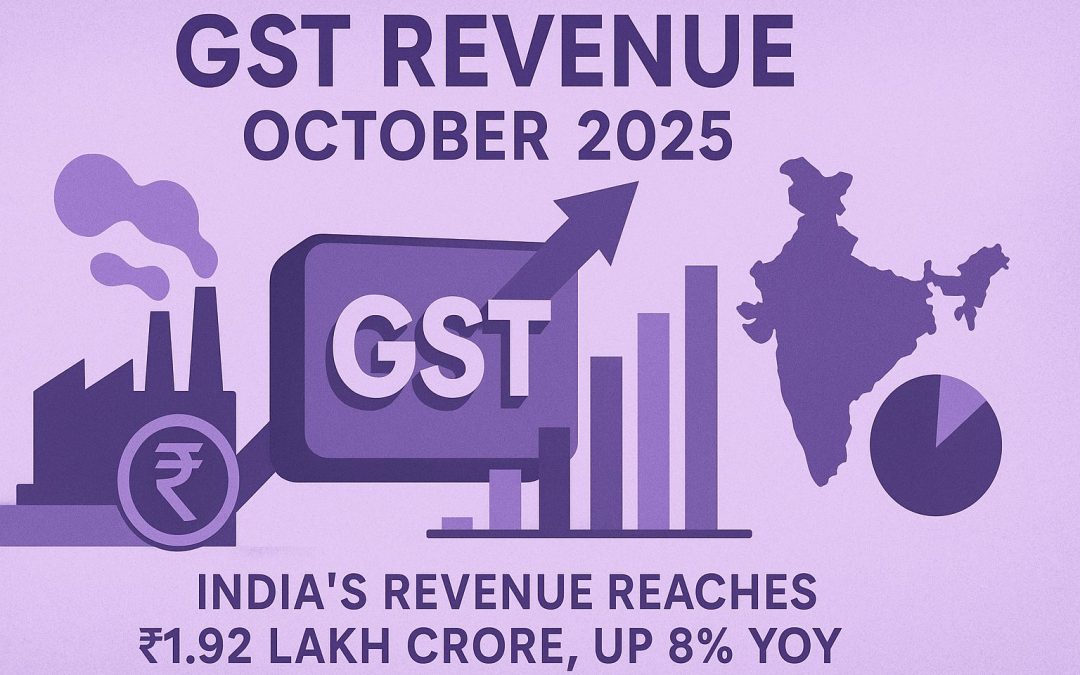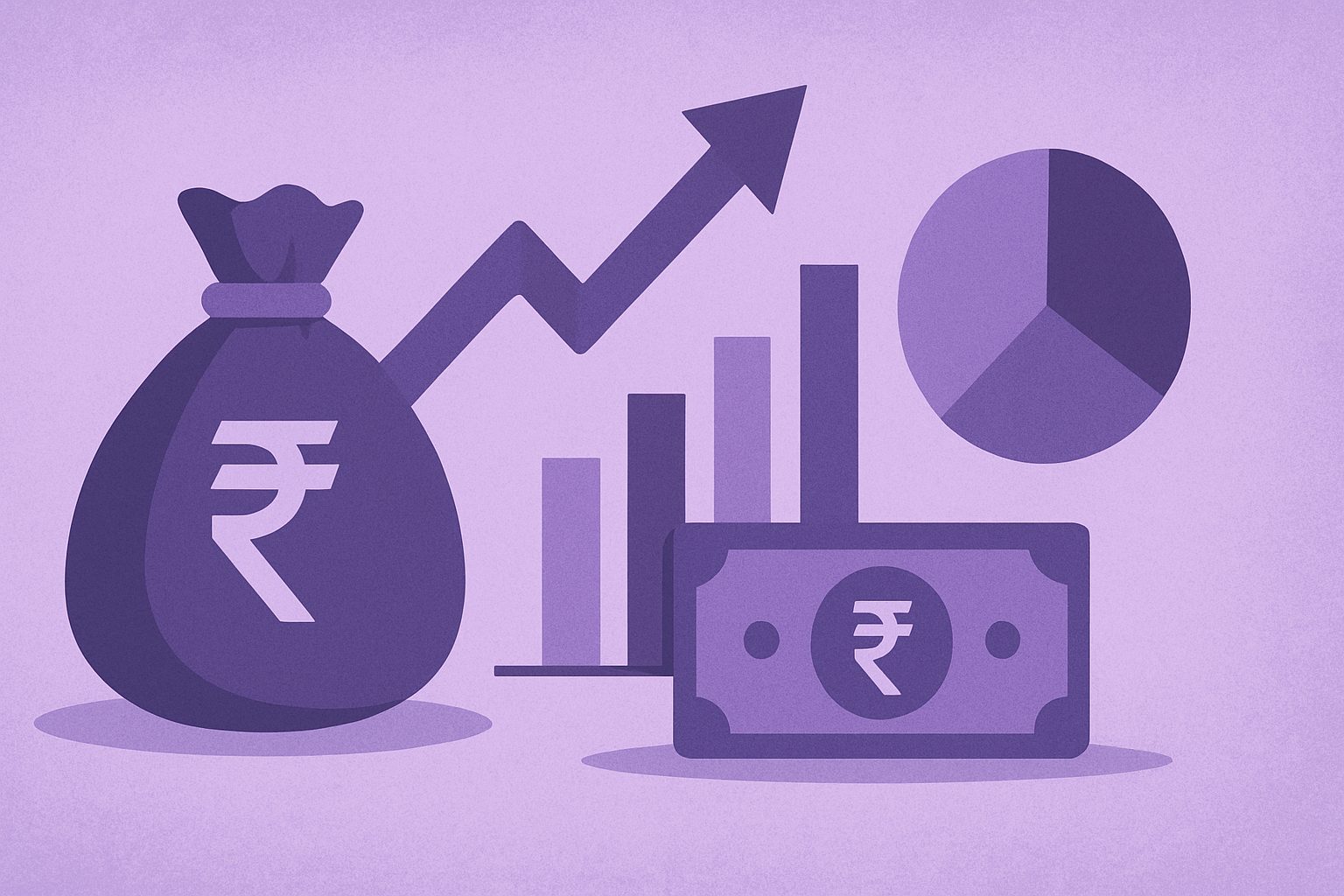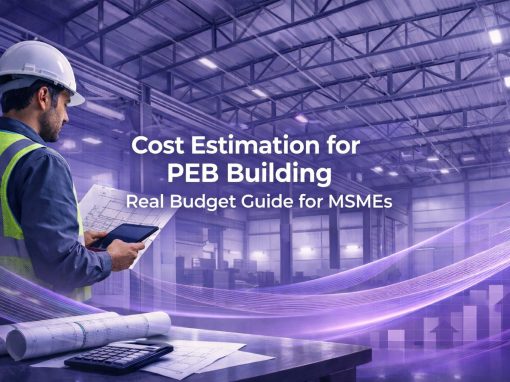Table of Contents
India’s GST revenue October 2025 reached ₹1.92 lakh crore, an 8% increase compared to the same month last year. The growth was fuelled by strong festive demand, higher compliance, and a steady rise in business activity. This performance highlights consistent momentum in both manufacturing and services sectors. Though slightly lower than September’s record, collections remain stable.
In this article, we explore key drivers behind the growth, sector-wise trends, and state-wise revenue performance. We also look at what these numbers reveal about the broader economy. Finally, we discuss how these trends could shape MSME performance in the coming quarter.
Overview of National GST Performance
India’s Goods and Services Tax (GST) revenue reached ₹1.92 lakh crore in October 2025, up 8% year-on-year from ₹1.78 lakh crore in October 2024. However, it was slightly lower than September 2025’s record ₹1.95 lakh crore, showing a modest month-on-month dip. The data suggests that while overall growth remains solid, collections have stabilised after the festive surge.
Domestic transactions continued to drive revenue, supported by strong retail sales and service activity. In contrast, import-based collections showed mild weakness, reflecting softer global demand and trade pressures. Despite this, consistent year-on-year growth signals sustained economic confidence. The October figures indicate a broadly positive outlook as India enters the final quarter of the financial year.
| Month | GST Revenue (₹ lakh crore) | YoY Growth (%) |
| October 2024 | 1.78 | — |
| October 2025 | 1.92 | 8% |
A Closer Look at October 2025 GST Collection
In October 2025, India’s gross GST collections stood at ₹1,95,936 crore, representing a 4.6% year-on-year rise from ₹1,87,346 crore in October 2024. Domestic transactions (excluding imports) grew by just 2.0% YoY, while import-linked GST revenues surged by 12.8%.
Below is the component-wise breakdown for October 2025:
| Component | Amount (₹ crore) | Key Insight |
| CGST | 36,547 | Up modestly, showing steady central tax flow |
| SGST | 45,134 | Reflects healthy intra-state trade activity |
| IGST | 1,06,443 | Strong import + inter-state supply boost |
| Cess | 7,812 | Lower base due to narrower cess-scope |
Key highlights:
- Despite rate cuts effective from 22 September, the growth in GST collections held firm at ~4.6% YoY, though it’s lower than earlier months.
- The relatively low growth in domestic transaction-based revenue (just ~2.0%) suggests discretionary spending may have been deferred ahead of the tax changes.
- The strong rise in IGST points to robust import and inter-state activity, indicating outward-looking trade and movement remain active.
- The modest increase in SGST is encouraging. It signals that state-level economic activity remains broadly stable even in a tighter environment.
State-wise GST Collection for October 2025
State-wise data for October 2025 shows that Maharashtra, Karnataka, and Tamil Nadu remained the top contributors to India’s overall GST revenue. Maharashtra led with ₹29,400 crore, growing 9% year-on-year, supported by strong industrial and services activity. Karnataka followed with ₹14,800 crore, posting a 12% rise, fuelled by its expanding IT and manufacturing sectors. Tamil Nadu collected ₹11,400 crore, marking an 8% increase, reflecting steady automobile and textile output.
Top state GST contributors for October 2025
| Rank | State | GST Collected (₹ crore) | YoY Growth |
| 1 | Maharashtra | 29,400 | +9% |
| 2 | Karnataka | 14,800 | +12% |
| 3 | Tamil Nadu | 11,400 | +8% |
| 4 | Uttar Pradesh | 9,200 | +10% |
| 5 | Gujarat | 8,900 | +7% |
Southern states continued to dominate GST growth, driven by resilient domestic demand and manufacturing strength. Smaller states such as Assam (+20%) and Himachal Pradesh (+16%) reported robust gains, supported by MSME expansion and tourism recovery. In contrast, Jharkhand and Manipur saw slight declines, attributed to project delays and lower mining output. Overall, the broad-based growth across states suggests a healthy, geographically balanced tax performance heading into the festive quarter.
Sectoral Insights: Manufacturing and Services Drive GST Growth
October 2025’s GST data highlights broad-based growth across both manufacturing and services, reinforcing India’s economic stability amid global headwinds. Manufacturing sector collections rose by 9% year-on-year, supported by robust demand in automobiles, steel, and consumer durables during the festive period. This indicates that production activity remained strong despite cost pressures from energy and raw materials.
The services sector also maintained steady momentum, registering a 7% YoY increase in GST inflows. Growth was led by IT services, logistics, and financial services, reflecting rising domestic consumption and sustained export orders. While global trade showed some moderation, domestic services such as travel, retail, and hospitality recorded double-digit expansion, contributing significantly to state-level revenues.
| Sector | GST Growth (YoY) | Key Drivers |
| Manufacturing | +9% | Strong festive demand, auto and steel output, stable export orders |
| Services | +7% | IT, logistics, retail, and hospitality rebound |
| Construction & Real Estate | +6% | Public infrastructure projects and housing demand |
| Trade (Wholesale & Retail) | +8% | Festive sales and inventory restocking |
| Export-linked Sectors | +4% | Moderation due to weaker global demand |
Overall, the sectoral data shows that domestic demand continues to be the backbone of GST growth, cushioning the impact of slower imports. The balance between manufacturing strength and service-led expansion suggests India’s post-reform economy is entering a phase of steady, broad-based recovery going into FY 2025–26.
Refund Trends and Cash Flow Impact
In October 2025, GST refund disbursements totalled ₹18,900 crore, marking an 18% decline year-on-year. This slowdown suggests that liquidity conditions may be tightening, particularly for exporters and manufacturing units that rely on timely refunds to maintain working capital. The reduced pace of disbursements could also reflect stricter verification and audit measures under the updated GSTN system.
Despite lower refunds, net GST revenue after adjustments grew 9.5%, indicating improved tax compliance and stronger domestic collection efficiency. Analysts note that refund processing timelines may normalise in the coming months as system upgrades take effect. Businesses are advised to reconcile Input Tax Credit (ITC) claims early, ensuring smooth filings before the November deadlines. Overall, the data reflects a short-term liquidity squeeze but a positive trend in net revenue stability.
Key Takeaways for MSMEs
October’s GST data offers important lessons for small and medium enterprises navigating the upcoming quarter. While revenue growth remains steady, refund delays and compliance updates call for proactive financial planning. MSMEs should use this period to tighten reporting accuracy and prepare for evolving GSTN requirements.
Here are five practical takeaways:
- Reconcile ITC promptly: With refund disbursements slowing, accurate Input Tax Credit matching is essential to avoid cash flow strain.
- Track compliance deadlines: November brings stricter filing cut-offs; early submission can prevent late fees and system rejections.
- Adopt digital tools: E-invoicing and GST portal upgrades will streamline reporting but may require system alignment for mid-sized firms.
- Plan inventory smartly: October’s strong demand suggests sustained festive spending — efficient stock planning can capture this momentum.
- Diversify sourcing: As import-based collections soften, MSMEs relying on overseas inputs should strengthen domestic supplier networks.
Together, these steps can help MSMEs maintain liquidity, ensure compliance, and position themselves for steady growth through FY 2025–26.
Upcoming Policy Changes
The upcoming GST Council meeting (November 2025) is set to review several key proposals that could impact MSMEs and exporters:
- Rate rationalisation:
The Council may move towards a simplified two-slab GST structure, reducing classification complexities and easing compliance for smaller businesses. - Refund automation:
Plans are underway to digitally automate refund processing, especially for exporters and MSMEs, to reduce delays and improve liquidity. - E-way bill and E-invoicing integration:
A proposal to link E-way bills with E-invoicing aims to enhance transparency and enable real-time tracking of goods movement. - Compliance simplification:
The GSTN system is expected to roll out user-friendly dashboards and AI-based reconciliation tools to support timely filings. - Impact outlook:
These measures together could streamline compliance, lower administrative burden, and improve working capital flow for MSMEs in FY 2025–26.
Conclusion
October’s ₹1.92 lakh crore GST collection highlights India’s continued economic resilience despite mixed global conditions. Domestic trade and services remain the key growth engines, even as import-linked revenues show signs of moderation. The slight dip from September’s record levels suggests stabilisation rather than slowdown.
As policy updates and compliance changes take shape, businesses, especially MSMEs, must stay agile and well-prepared. Timely ITC reconciliation, digital readiness, and smart cash-flow planning will be crucial in the months ahead. With consistent effort, MSMEs can turn regulatory shifts into opportunities for sustained growth.
Empowering MSMEs to grow smarter
Tata nexarc delivers powerful solutions for MSMEs—discover tenders, logistics solutions, and streamline procurement. Everything your business needs, all in one place.
FAQs
What was India’s total GST collection in October 2025?
How does this compare to the previous month?
Which component contributed the most to GST revenue?
Which states recorded the highest GST collections?
Why did refund disbursements fall in October 2025?
How did domestic and import-based GST collections perform?
What does the GST trend indicate for MSMEs?
What policy changes are expected soon?
How will these changes affect small businesses?
What is the overall economic outlook based on October’s data?
A product manager with a writer's heart, Anirban leverages his 6 years of experience to empower MSMEs in the business and technology sectors. His time at Tata nexarc honed his skills in crafting informative content tailored to MSME needs. Whether wielding words for business or developing innovative products for both Tata Nexarc and MSMEs, his passion for clear communication and a deep understanding of their challenges shine through.








